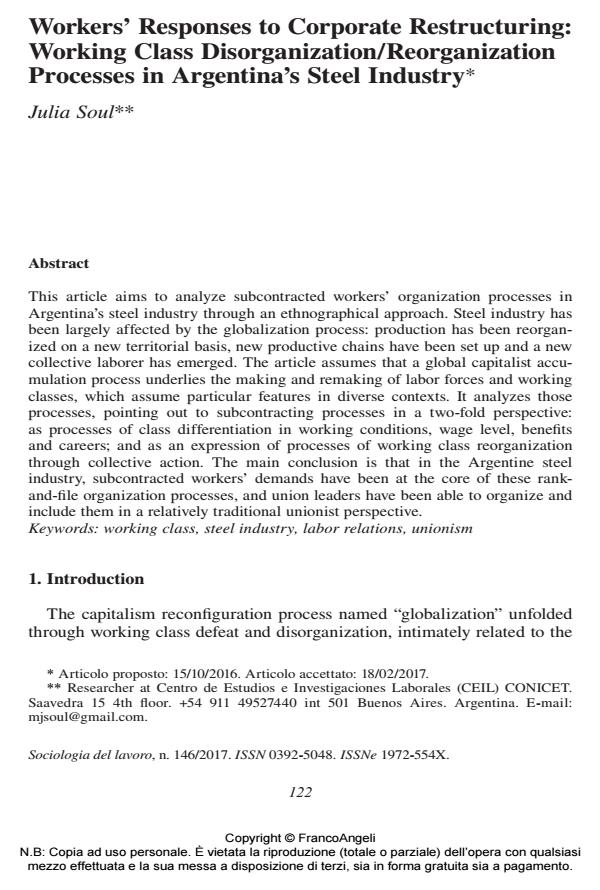Workers’ Responses to Corporate Restructuring: Working Class Disorganization/Reorganization Processes in Argentina’s Steel Industry
Journal title SOCIOLOGIA DEL LAVORO
Author/s Julia Soul
Publishing Year 2017 Issue 2017/146
Language English Pages 17 P. 122-138 File size 113 KB
DOI 10.3280/SL2017-146008
DOI is like a bar code for intellectual property: to have more infomation
click here
Below, you can see the article first page
If you want to buy this article in PDF format, you can do it, following the instructions to buy download credits

FrancoAngeli is member of Publishers International Linking Association, Inc (PILA), a not-for-profit association which run the CrossRef service enabling links to and from online scholarly content.
This article aims to analyze subcontracted workers’ organization processes in Argentina’s steel industry through an ethnographical approach. Steel industry has been largely affected by the globalization process: production has been reorganized on a new territorial basis, new productive chains have been set up and a new collective laborer has emerged. The article assumes that a global capitalist accumulation process underlies the making and remaking of labor forces and working classes, which assume particular features in diverse contexts. It analyzes those processes, pointing out to subcontracting processes in a two-fold perspective: as processes of class differentiation in working conditions, wage level, benefits and careers; and as an expression of processes of working class reorganization through collective action. The main conclusion is that in the Argentine steel industry, subcontracted workers’ demands have been at the core of these rankand-file organization processes, and union leaders have been able to organize and include them in a relatively traditional unionist perspective.
Keywords: Working class, steel industry, labor relations, unionism
- “The union is like a family father, the chief”. Working-class making and (re) making and union membership experiences in two generations of Argentinian metalworkers Julia Soul, in Dialectical Anthropology /2020 pp.137
DOI: 10.1007/s10624-019-09576-z
Julia Soul, Workers’ Responses to Corporate Restructuring: Working Class Disorganization/Reorganization Processes in Argentina’s Steel Industry in "SOCIOLOGIA DEL LAVORO " 146/2017, pp 122-138, DOI: 10.3280/SL2017-146008